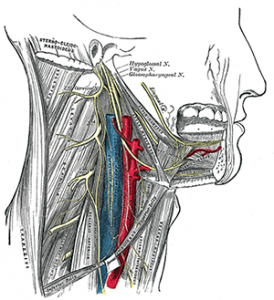While paralyzed faces were rated as significantly less attractive, as having a more negative affect, and as more impaired than normal faces, the ratings of left- and right-sided paralysis didn’t show any difference in how their attractiveness was viewed, researchers found. “This demonstrates the dominance of the paralysis effect on observer perception over the left hemiface preference,” Dr. Nellis said.
Explore This Issue
June 2017Workplace Facial Trauma On the Decline

© ndoeljindoel / shutterstock.com
A review of data on facial trauma from the U.S. Bureau of Labor Statistics
Occupational Injuries and Illnesses showed a significant decline in injuries over the period of 2004 through 2014, said Joshua Romero, MD, an otolaryngology resident at State University of New York Upstate in Syracuse.
Overall, the researchers found a total of 467,610 injuries during the 10-year time period, with a median of two days of missed work for each injury. The majority of injuries (64%) were cases of ocular trauma, but these declined from 36,680 in 2004 to 20,910 in 2014. The researchers also found that most other types of facial trauma did not significantly decline over that time, and that cases of workplace assault have significantly increased.
Overall, the incidence of workplace injuries is falling, from 10.9 injuries for every 100 workers in 1972 to 3.9 per 100 in 2014. But, researchers said that interventions targeting at-risk groups could be helpful. Young workers aged 27 to 34, who comprise 27% of the injuries, and male workers, who comprise 75% of the injuries, have the highest rate of facial injuries, and Hispanic workers are affected at a rate disproportionate to their population, Dr. Romero said.
Manual labor jobs, such as those in production and natural resources, account for an injury for approximately every 1,500 workers and are much more dangerous than office jobs, which account for an injury for every 45,000 workers, Dr. Romero said.
He added that, while incidence of facial trauma is falling and the U.S. workplace seems to be getting safer, there is room for improvement. “If targeted interventions are having an effect on ocular trauma, there could be targeted interventions available for the other subsites [of the face] that we could focus on and thus harvest some public health benefits,” he added.
Voice and Swallowing Outcomes Following Hypoglossal Nerve Stimulation for OSA

Hypoglossal nerve, cervical plexus, and their branches.
© Gray’s Anatomy (1918)
In a prospective clinical study, researchers found that hypoglossal nerve stimulation didn’t have any lasting patient-reported adverse effects on voice performance or swallowing function, said presenter Andrew Bowen, BS, a medical student at the Cleveland Clinic Lerner College of Medicine in Ohio.